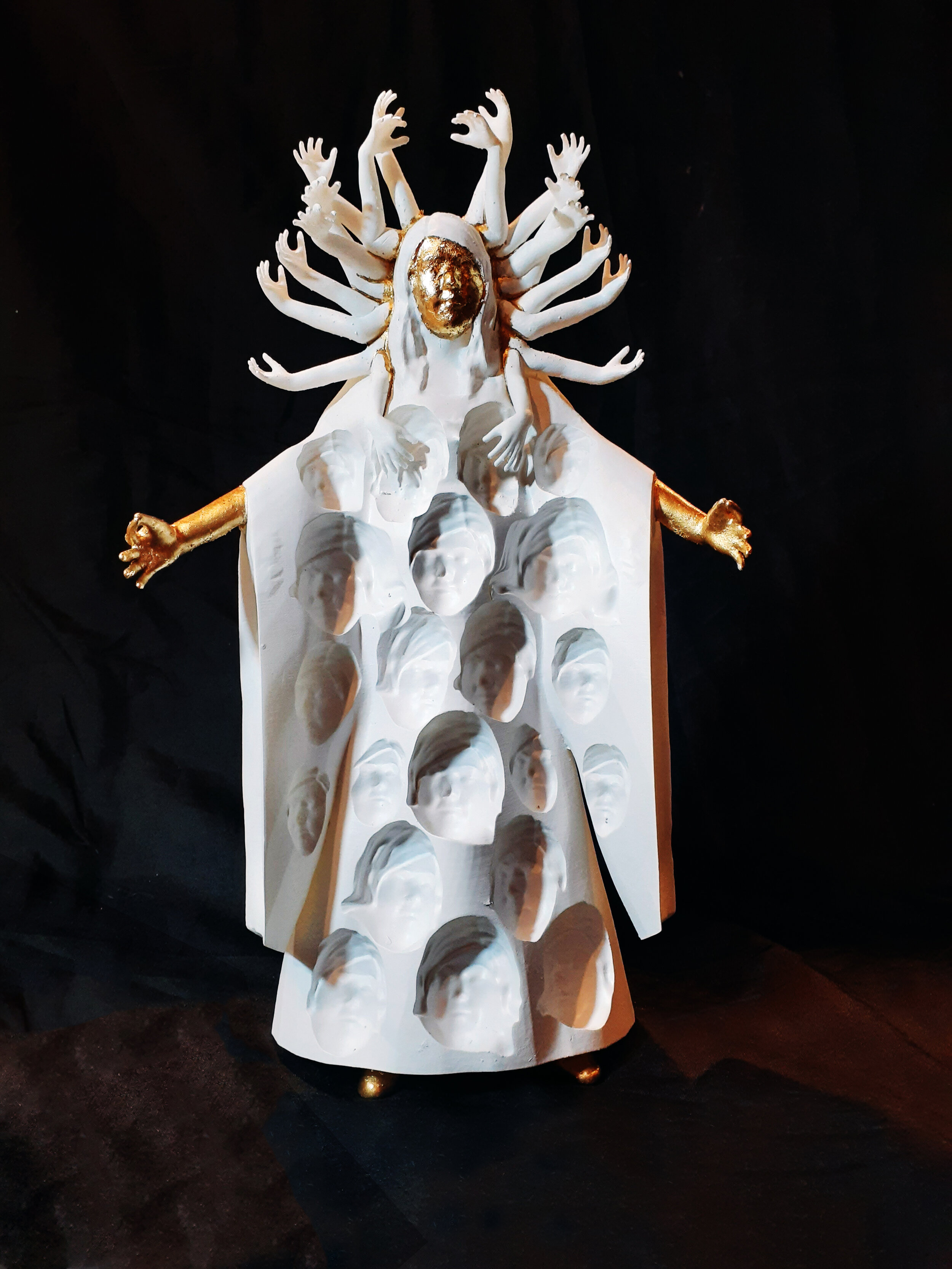
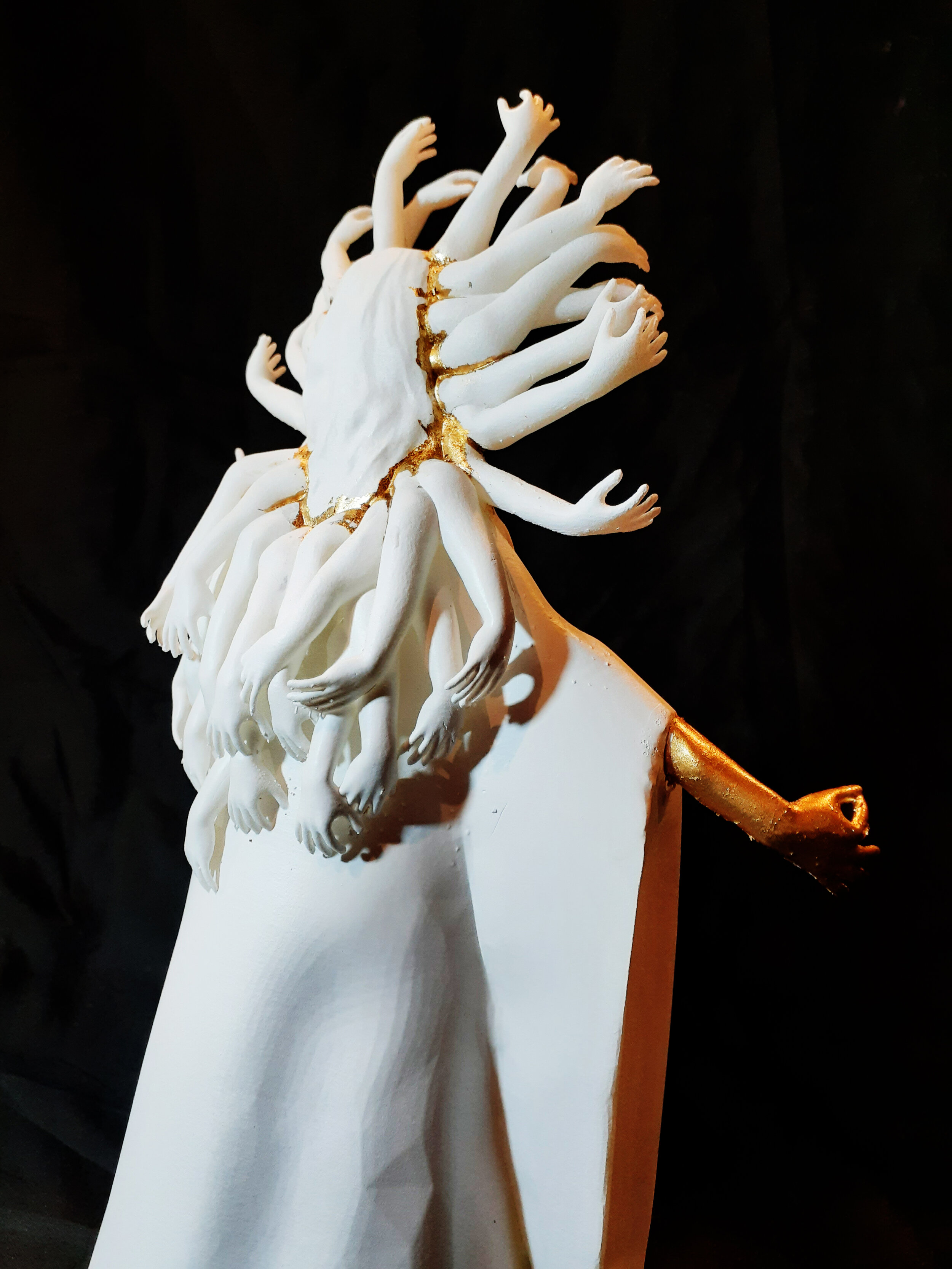
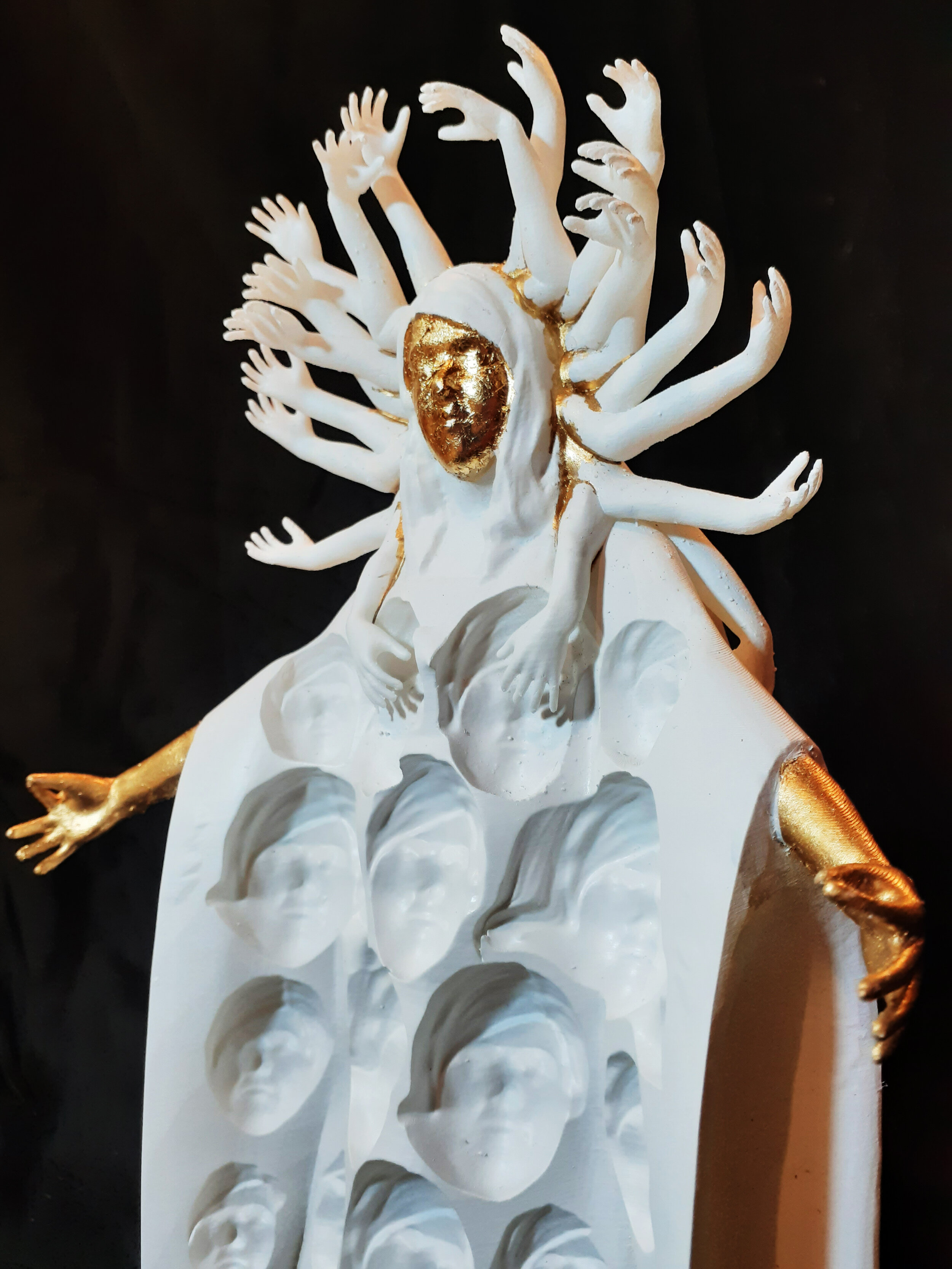
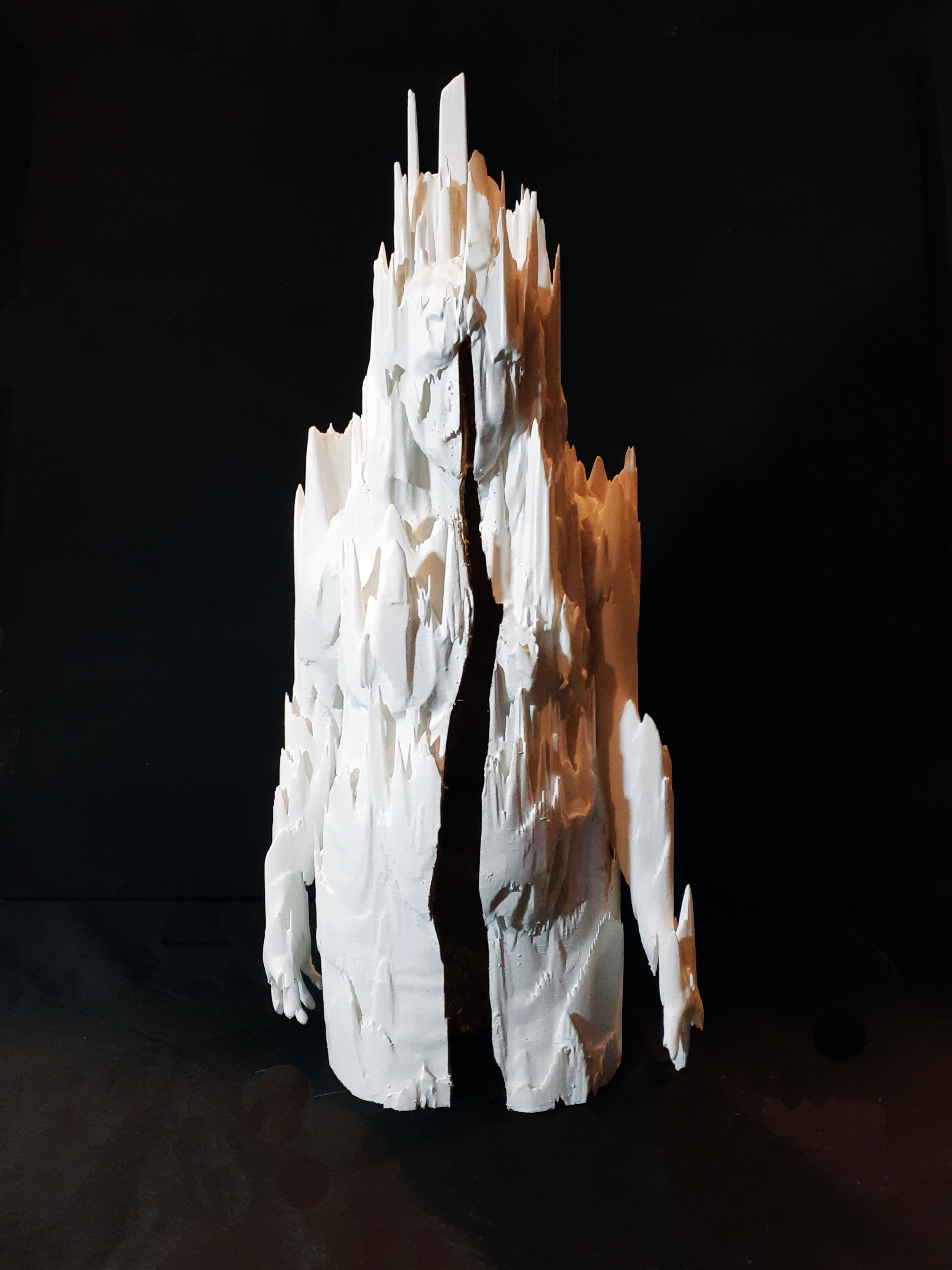
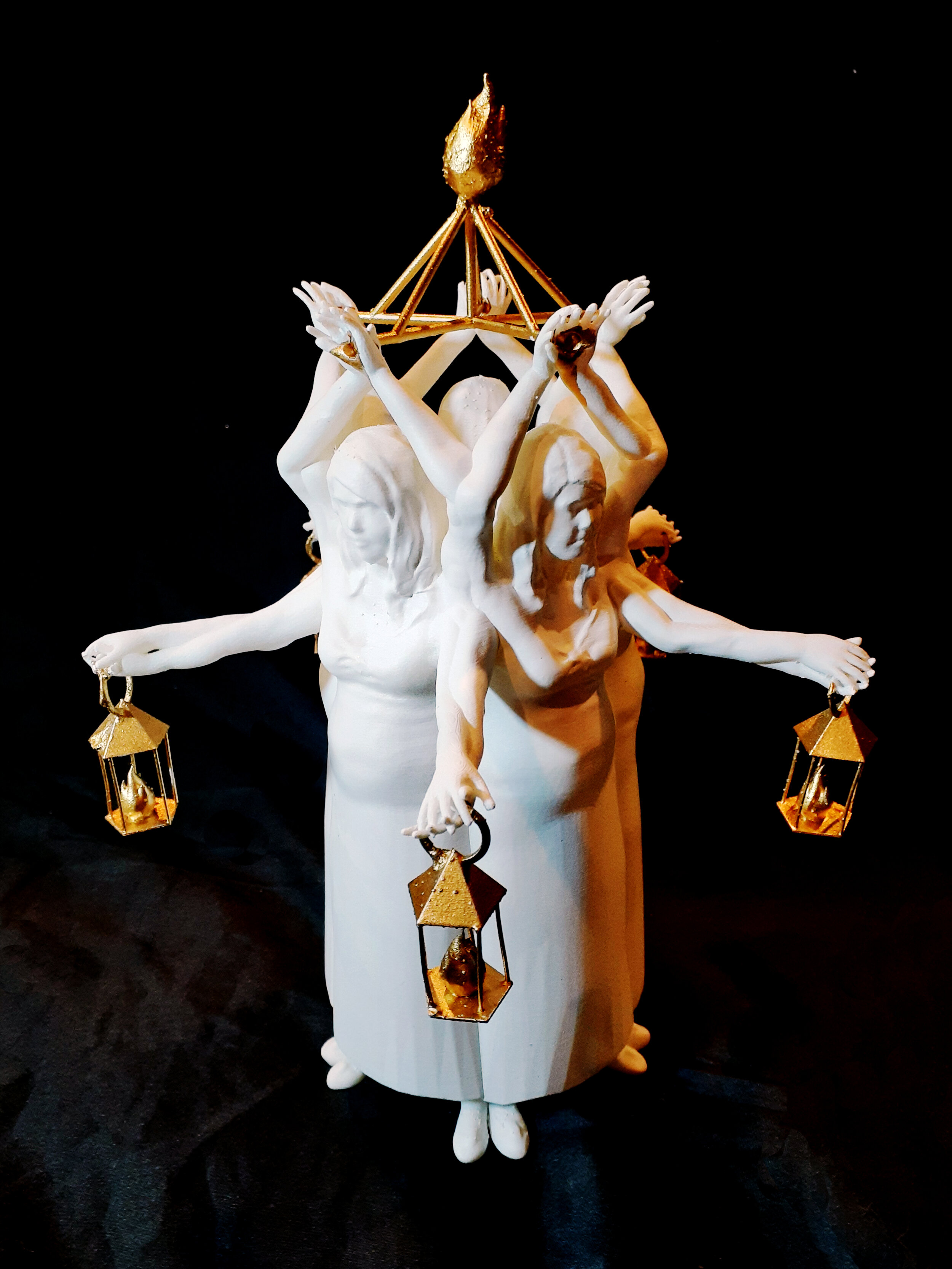
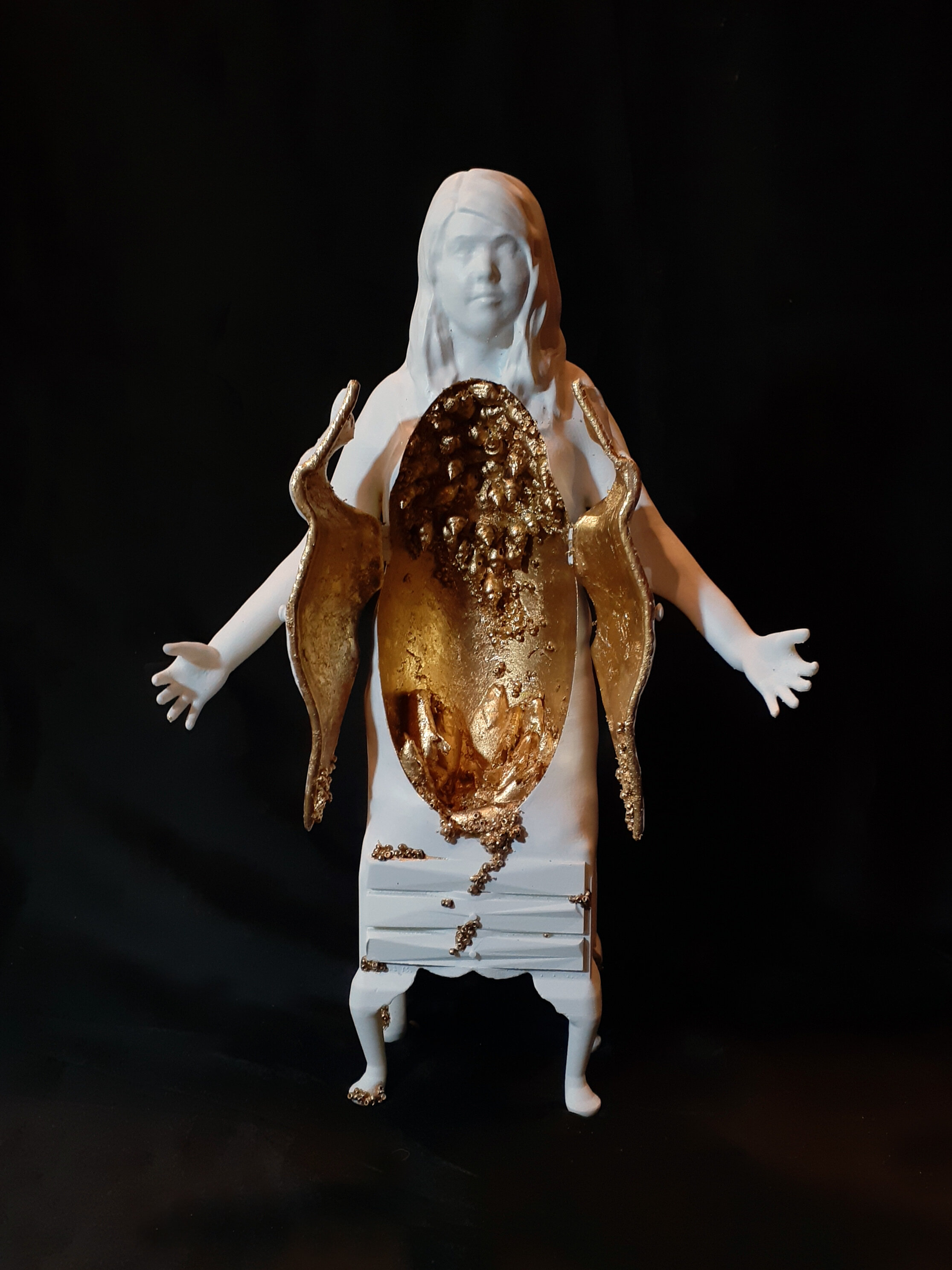
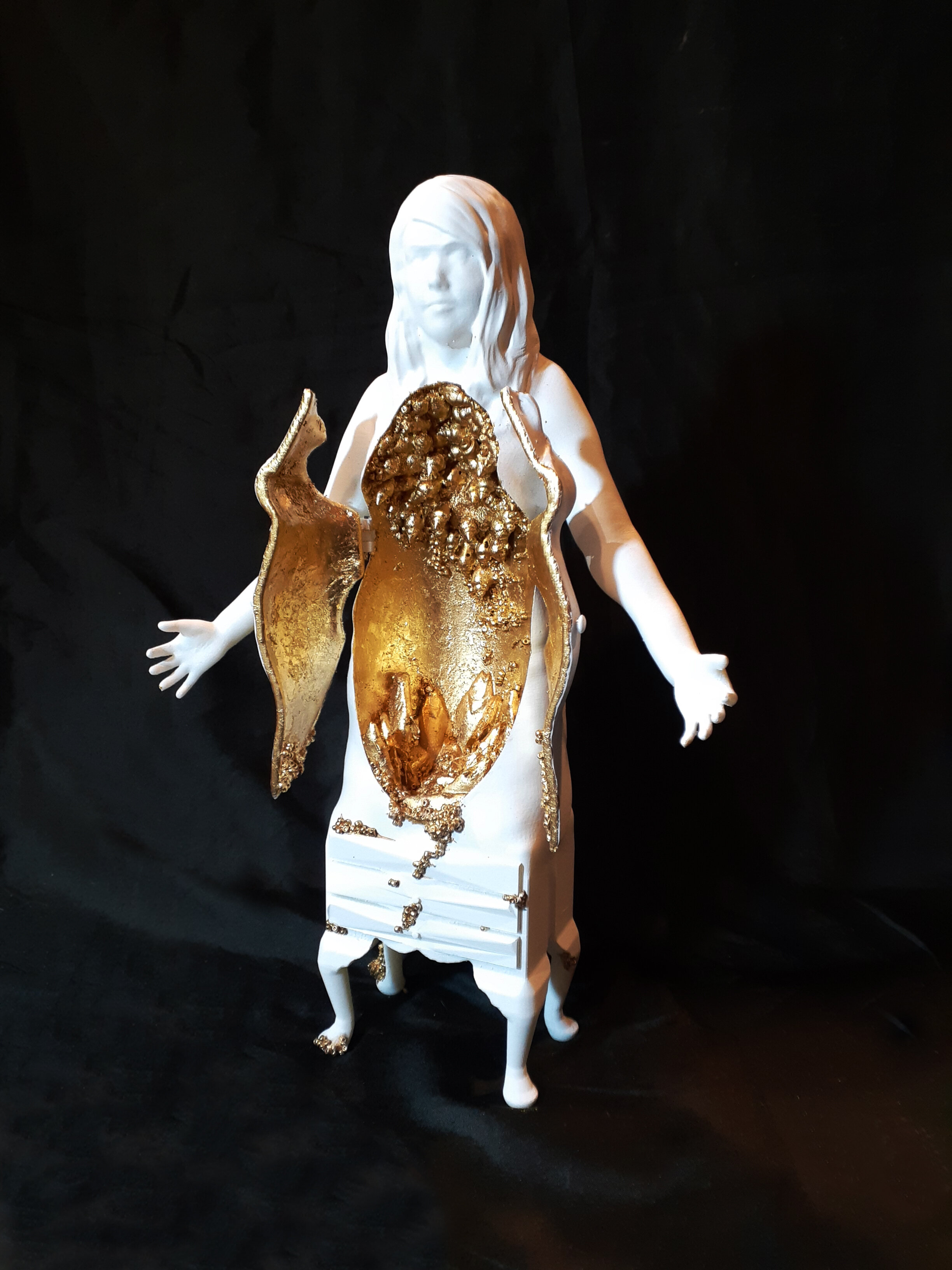
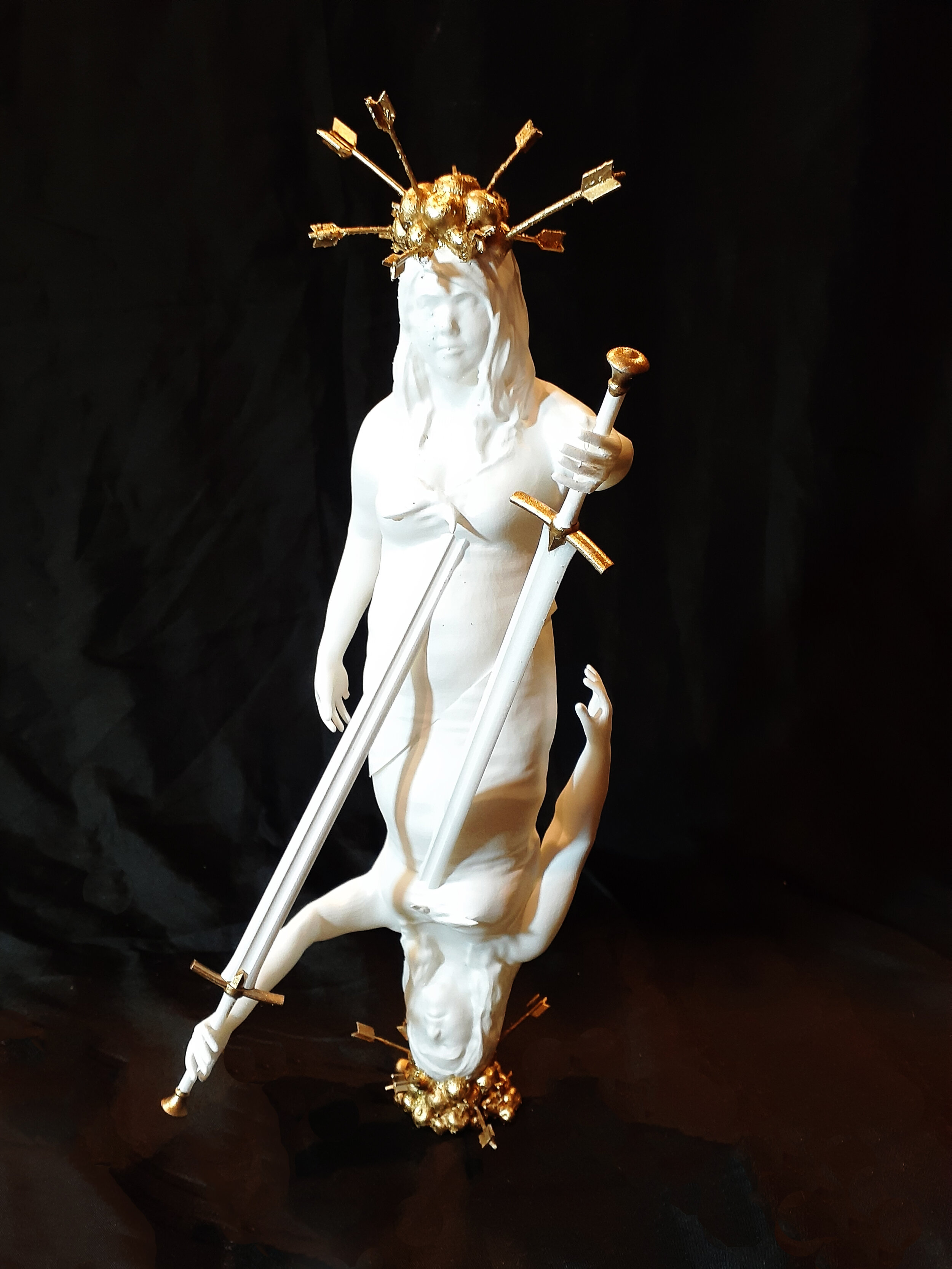
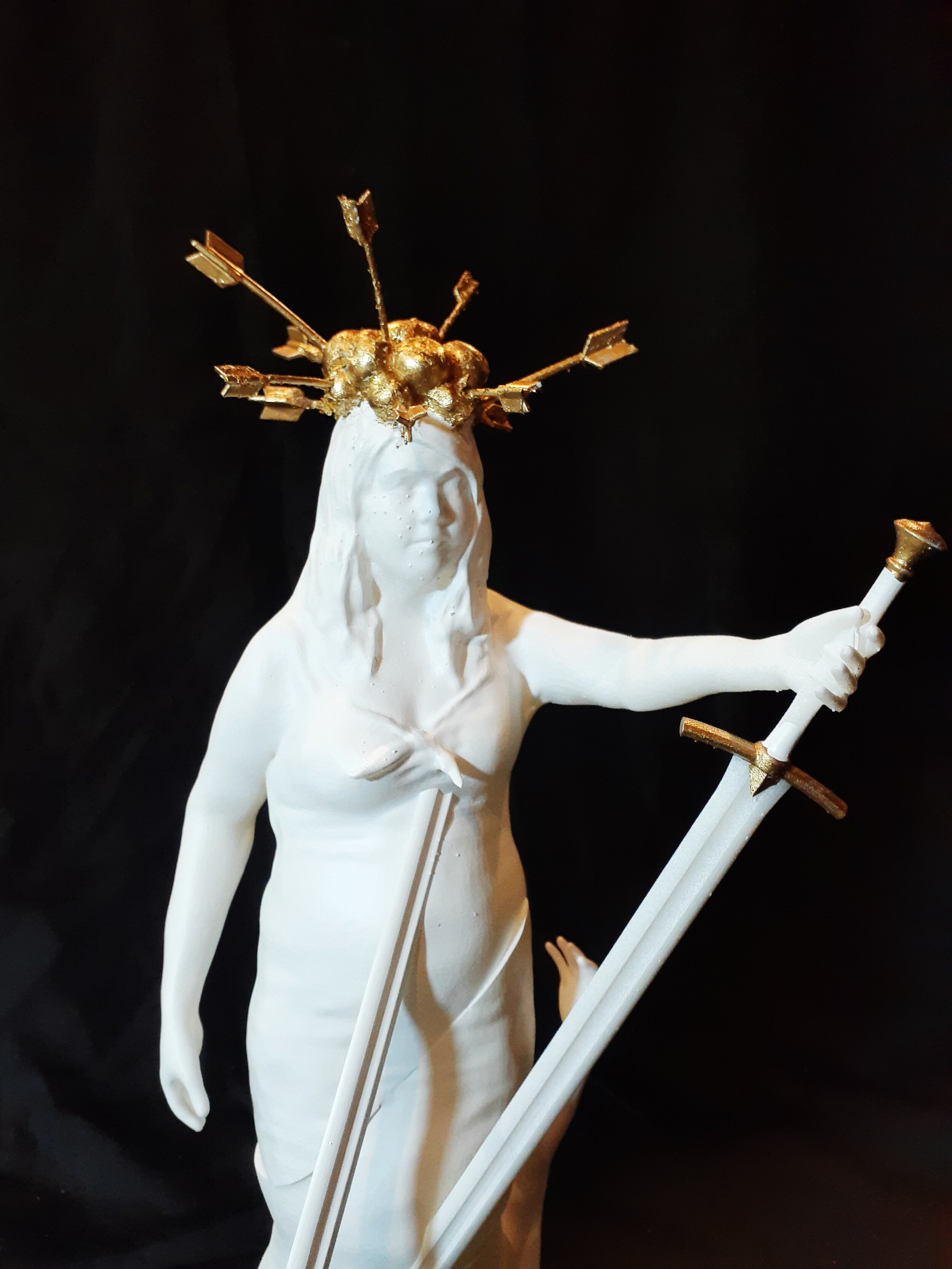
Your Custom Text Here
‘Crafted Technology’ was an exhibition of works by contemporary craftspeople who utilise technological processes or aesthetics in their works. The exhibition was held in Gallery Two, JamFactory Adelaide, and included Jane Bamford, Bin Dixon-Ward, Leah Heiss, Zhu Ohmu and myself.
When I began making works for this exhibition, I decided that the starting point for each work would be a single, simple function of the 3d modelling software I use, such as duplication of forms or simple subtraction of one form from another. As I began making, I started to think of the ways that these simple functions would drive narrative and spawn their own kinds of symbolism; I'm a big believer in the idea that technology both serves and shapes humanity's conceptual understanding of the world and the stories we tell each other, so I tried to think of the kind of narrative objects we would have made throughout our history if we'd had these digital tools instead of paint or clay, textiles or timber. The end result was a series of talismans of a sort, precious objects which act as triggers for enduring human ideals, digital expressions of folklore from a different timeline.
Digital mediums natively favour certain aesthetic principles; symmetry becomes an easy thing, cleanliness a given. These aspects of digital work can create a sterility at odds with felt understandings of craft; we're good at recognizing the hand of the maker, even when it's a subtle thing. That it's both absent and present in these works, that they arise through a collaborative process in which the title of creator belongs to both man and machine, that these objects contain traces of the human heart if not the hands cast them as objects from somewhere else; our most enduring stories told in a new dialogue.
‘Crafted Technology’ was an exhibition of works by contemporary craftspeople who utilise technological processes or aesthetics in their works. The exhibition was held in Gallery Two, JamFactory Adelaide, and included Jane Bamford, Bin Dixon-Ward, Leah Heiss, Zhu Ohmu and myself.
When I began making works for this exhibition, I decided that the starting point for each work would be a single, simple function of the 3d modelling software I use, such as duplication of forms or simple subtraction of one form from another. As I began making, I started to think of the ways that these simple functions would drive narrative and spawn their own kinds of symbolism; I'm a big believer in the idea that technology both serves and shapes humanity's conceptual understanding of the world and the stories we tell each other, so I tried to think of the kind of narrative objects we would have made throughout our history if we'd had these digital tools instead of paint or clay, textiles or timber. The end result was a series of talismans of a sort, precious objects which act as triggers for enduring human ideals, digital expressions of folklore from a different timeline.
Digital mediums natively favour certain aesthetic principles; symmetry becomes an easy thing, cleanliness a given. These aspects of digital work can create a sterility at odds with felt understandings of craft; we're good at recognizing the hand of the maker, even when it's a subtle thing. That it's both absent and present in these works, that they arise through a collaborative process in which the title of creator belongs to both man and machine, that these objects contain traces of the human heart if not the hands cast them as objects from somewhere else; our most enduring stories told in a new dialogue.